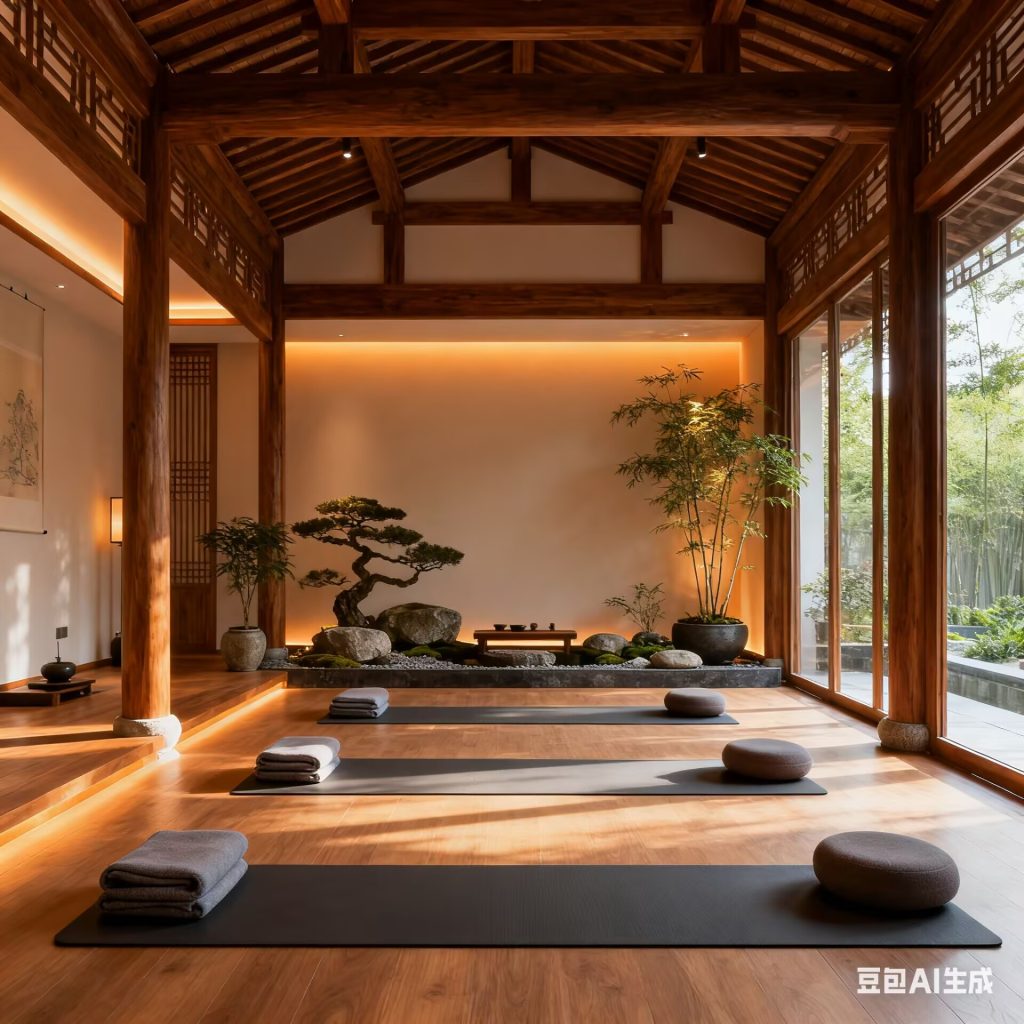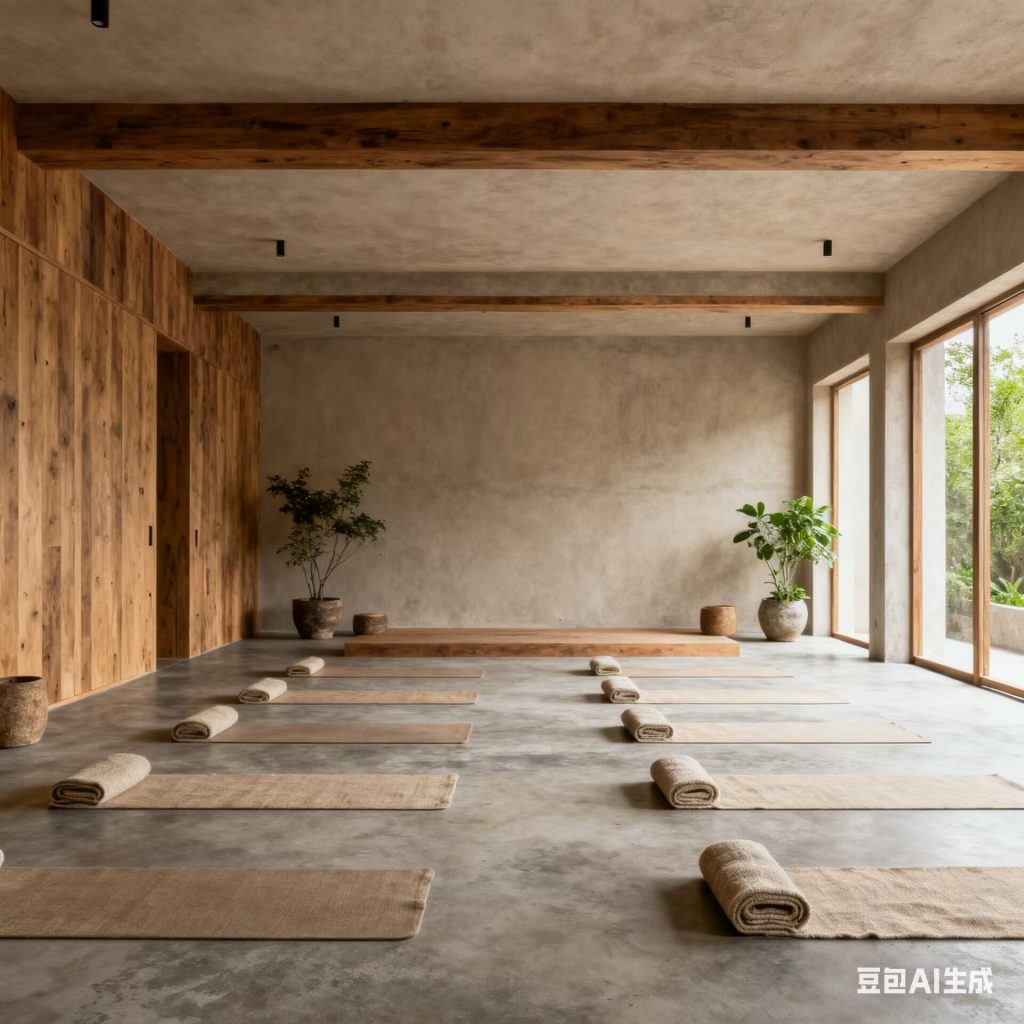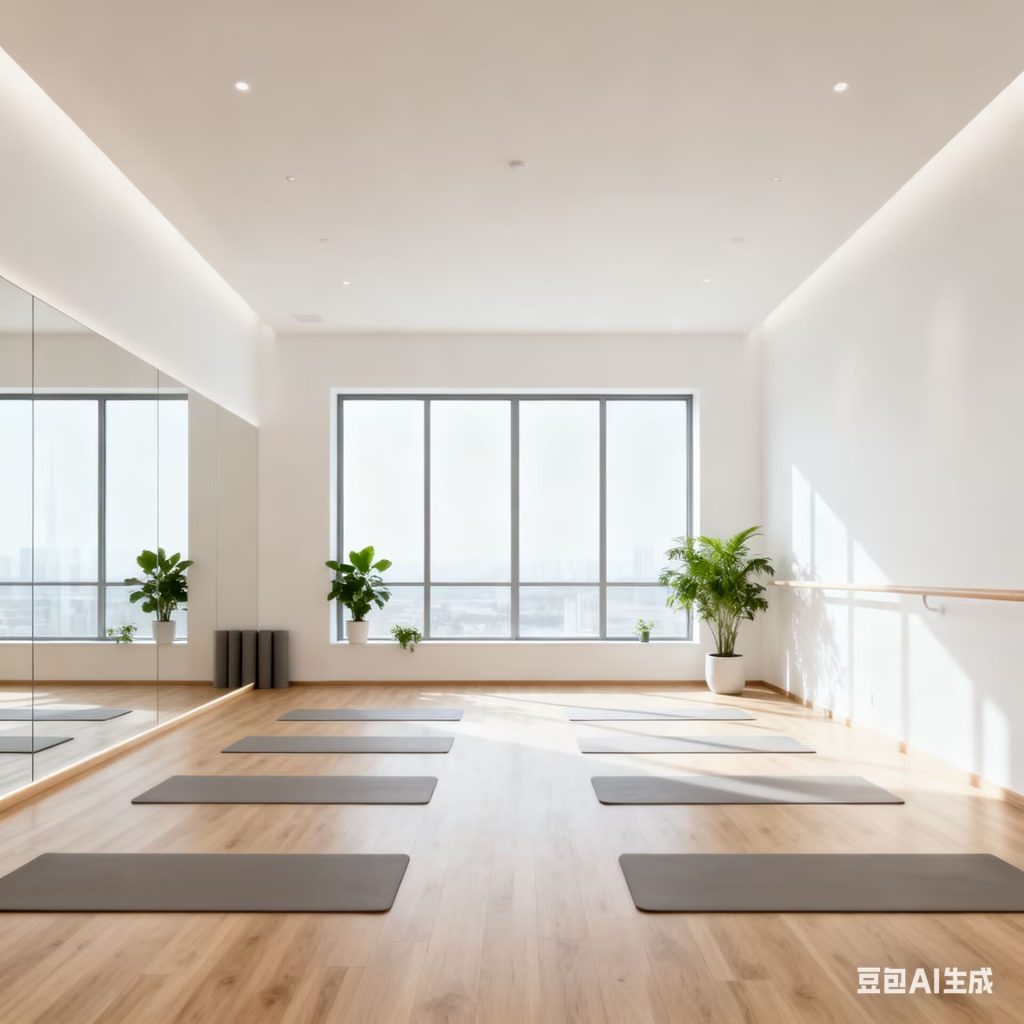In our fast-paced, hyper-connected world, the need for spaces of tranquility has never been greater. A yoga studio is more than just a room for physical exercise; it is a sanctuary for the mind, body, and spirit. Its design plays a crucial role in facilitating this journey inward, transforming a simple practice into a profound experience.
Let’s explore and appreciate some key design aesthetics for yoga studios, each crafted to cultivate peace, focus, and serenity.
1. The Zen Minimalist Retreat
Concept: Inspired by Japanese aesthetics, this style champions the principle of “less is more.” The space is a lesson in decluttering, both physically and mentally.
-
Color Palette: Neutral and earthy tones—soft whites, warm beiges, and subtle greys—dominate. These colors are non-stimulating and help quiet the mind.
-
Materials: Natural wood floors, clean-lined furniture, and raw, textured plaster walls create a sense of organic simplicity.
-
Key Features: Ample, unobstructed floor space is paramount. The only decorations might be a single, carefully chosen item: a smooth stone, a simple Ikebana flower arrangement, or a single scroll. Large windows allow natural light to flood the room, emphasizing the connection to the outside world without distraction.
Why it Works: The absence of visual noise allows practitioners to turn their focus entirely inward, making it ideal for meditation and mindful Vinyasa flows.

A Zen Minimalist studio where simplicity guides the practice
2. The Organic & Earthy Haven
Concept: This design brings the outdoors in, creating a grounded and nurturing environment that feels both safe and expansive.
-
Color Palette: Rich greens, deep terracotta, and warm browns mimic the forest and earth.
-
Materials: Expect to see abundant use of natural materials: bamboo flooring, jute or seagrass rugs, live-edge wood shelves, and stone accent walls. Plenty of lush, green plants are essential, purifying the air and adding vitality.
-
Key Features: A living wall or a collection of hanging plants can serve as a beautiful focal point. Woven baskets for props and soft, woolen blankets add texture and warmth. Lighting is soft and warm, often mimicking the gentle glow of sunset.
Why it Works: This style appeals to our innate biophilic connection to nature, promoting feelings of stability and growth—perfect for Hatha or Restorative yoga.

An Organic Haven where nature and practice intertwine.
3. The Industrial Serenity Loft
Concept: This style masterfully balances raw, urban elements with soft, calming touches to create a unique and inspiring space.
-
Color Palette: A base of cool greys and concrete tones is warmed up with accents of wood and soft textiles.
-
Materials: Exposed brick walls, polished concrete floors, and visible ductwork and pipes define the space. These are intentionally left raw to celebrate the building’s honest structure.
-
Key Features: The hardness of the industrial elements is always balanced with softness. Think large, plush yoga mats, flowing sheer curtains, and strategically placed rugs. Statement pendant lights or soft, indirect LED strips are used to create a warm, inviting glow that contrasts with the cool concrete.
Why it Works: The juxtaposition of strength and softness is a powerful metaphor for a yoga practice itself. It’s ideal for dynamic, powerful styles like Ashtanga or Hot Yoga, providing a strong, grounded backdrop.

An Industrial Serenity space where raw beauty meets mindful practice.
4. The Bohemian Rhapsody
Concept: Free-spirited, eclectic, and deeply personal, the Bohemian studio is a celebration of texture, pattern, and global influences.
-
Color Palette: A rich tapestry of jewel tones (deep blues, emerald greens, burnt orange) or softer, pastel hues, often mixed with white and natural wood.
-
Materials: This style is all about layers. You’ll find macramé wall hangings, vintage Persian or Kilim rugs, embroidered cushions, and tapestries.
-
Key Features: The space feels curated rather than designed. Mismatched but beautiful props, fairy lights, crystals, and incense holders create an intimate and inspiring atmosphere. Every corner tells a story.
Why it Works: The Bohemian studio encourages creativity and self-expression, making it a wonderful space for intuitive flow practices and community-based classes.
Universal Elements of a Serene Studio
Regardless of the chosen aesthetic, all successful yoga studio designs share common threads:
Ample Natural Light: Large windows and skylights are invaluable, connecting practitioners to the rhythms of the day.
Intelligent Artificial Lighting: Dimmable, warm-toned lights are essential for creating the right mood for evening or restorative classes.
Superior Acoustics: Sound-absorbing materials ensure that the space remains quiet, allowing the instructor’s voice and soothing music to be heard clearly.
Ventilation and Air Quality: A well-ventilated space, perhaps with an air purification system, is crucial for a comfortable and healthy practice.
Thoughtful Flow: The layout should be intuitive, with a clear entryway, a dedicated space for mats, and accessible storage for props.
In conclusion, the design of a yoga studio is a silent but powerful teacher. It sets the tone, holds the space, and supports each individual’s journey toward inner peace. By choosing an aesthetic that resonates with its core philosophy, a studio can truly become a sanctuary for all who enter.
A Bohemian Rhapsody that invites creativity and warmth.


Leave A Comment